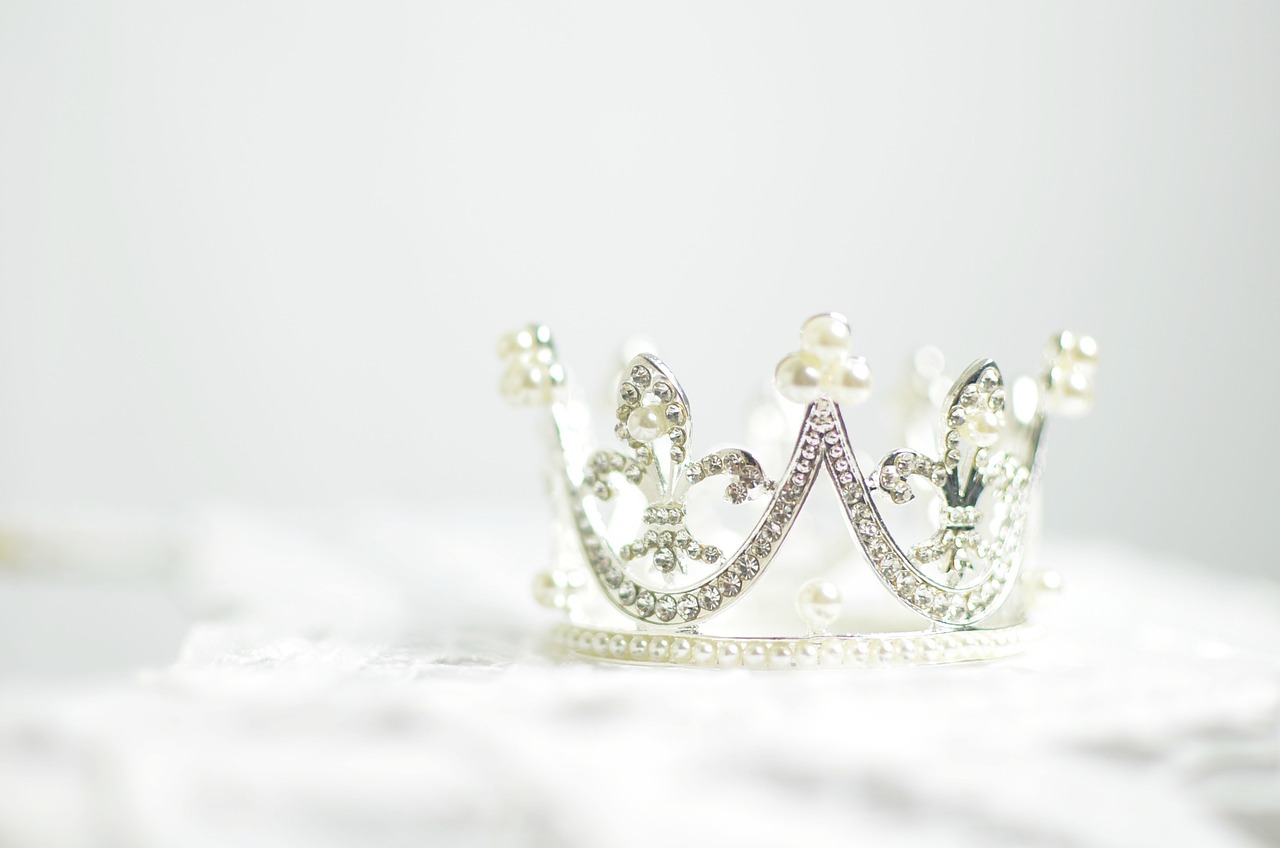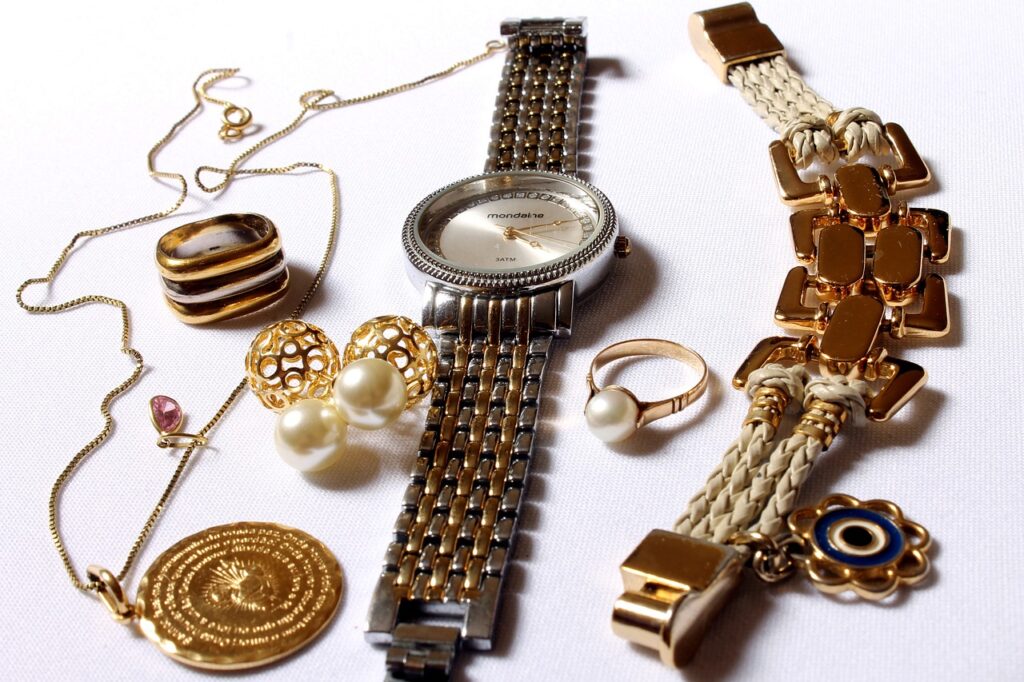
Iced-out jewelry, also known as bling or ice, is a type of jewelry that is heavily adorned with diamonds or other precious stones. The term “iced-out” refers to the way the jewelry sparkles and shines, giving the appearance of being covered in ice.
This type of jewelry has become increasingly popular in recent years, particularly in hip-hop and rap culture, where it is often seen as a symbol of wealth and success. Iced-out jewelry can come in a variety of forms, including necklaces, bracelets, earrings, and even watches.
The process of creating iced-out jewelry is complex and requires a high level of skill and expertise.

Why is it popular?
Iced-out jewelry has become increasingly popular in recent years due to its association with wealth, luxury, and status. The trend has been popularized by celebrities and influencers who are often seen wearing these pieces on red carpets and social media. Additionally, advancements in technology and manufacturing have made it easier and more affordable to produce high-quality iced-out jewelry, making it accessible to a wider range of consumers. The sparkle and shine of these pieces also make them a popular choice for special occasions such as weddings, proms, and other formal events. Overall, iced-out jewelry has become a symbol of extravagance and glamour, making it a highly sought-after accessory in the fashion world.
How is it made?
Iced-out jewelry is made using a variety of techniques, but the most common method involves setting small diamonds or other precious stones into a metal base. The metal is typically gold or platinum, which provides a durable and long-lasting foundation for the stones. The diamonds are carefully selected for their size, clarity, and color, and are then cut and polished to fit perfectly into the metal setting. The process requires a high level of skill and precision, as even the slightest mistake can ruin the entire piece. Once the stones are set, the jewelry is polished and finished to give it a brilliant shine and a smooth, flawless surface. The result is a stunning piece of jewelry that sparkles and shines in the light, making it the perfect accessory for any occasion.
The Materials
Base metal
Base metal is an essential component in the production of iced-out jewelry. It is the foundation upon which the precious metals and stones are set. The most commonly used base metals are brass and stainless steel. Brass is a popular choice due to its malleability and affordability. It is also easy to work with and can be plated with various metals, such as gold or silver, to achieve the desired look. Stainless steel, on the other hand, is a more durable option that is resistant to tarnishing and corrosion. It is often used for pieces that require a higher level of strength and longevity. Regardless of the base metal used, it is crucial to ensure that it is of high quality and free from any defects that could compromise the integrity of the final product.
Stones
Stones are an essential component of iced-out jewelry. The most commonly used stones are diamonds, but other precious stones such as rubies, sapphires, and emeralds are also popular. The stones are carefully selected for their quality, clarity, and color. Once selected, they are cut and polished to the desired shape and size. The stones are then set into the metal of the jewelry using various techniques such as prong, bezel, or channel setting. The process of setting the stones requires precision and skill to ensure that they are securely held in place and positioned correctly for maximum sparkle and shine.
Adhesives
Adhesives play a crucial role in the creation of iced-out jewelry. They are used to secure the stones onto the metal base, ensuring that they do not fall off or become loose over time. The type of adhesive used depends on the type of stone and metal being used. For example, a stronger adhesive may be needed for heavier stones or for metals that are more difficult to bond with. Some popular adhesives used in the creation of iced-out jewelry include epoxy, super glue, and jeweler’s cement. It is important to use a high-quality adhesive to ensure the longevity and durability of the jewelry.
The Process
Designing the piece
Once the design has been finalized, the next step is to create a 3D model of the piece using computer-aided design (CAD) software. This allows the jeweler to see a virtual representation of the piece and make any necessary adjustments before moving on to the actual production process. Once the design is approved, the jeweler will use a wax mold to create a physical model of the piece. This wax mold will then be used to create a mold for the metal casting process. The metal used for the piece will typically be gold or platinum, as these metals are durable and can withstand the weight of the diamonds or other precious stones that will be added later.
Molding the metal
Once the metal has been cast into the desired shape, it is time to mold it into the final form. This process involves heating the metal to a high temperature and then cooling it rapidly to create a hardened surface. The metal is then polished and buffed to create a smooth, shiny finish. This process can be repeated multiple times to create intricate designs and patterns on the surface of the metal. The final result is a piece of iced-out jewelry that is both beautiful and durable, able to withstand the test of time and the wear and tear of everyday use.
Setting the stones
Setting the stones is a crucial step in the process of creating iced-out jewelry. The stones are carefully placed into the metal setting, which can be made of gold, silver, or platinum. The setting is designed to hold the stones securely in place, while also allowing them to catch the light and sparkle. There are several different types of settings that can be used, including prong, bezel, and channel settings. Each type of setting has its own unique advantages and disadvantages, and the choice of setting will depend on the type of stone being used and the desired look of the finished piece. Once the stones are set, the jewelry is polished and finished to create a stunning piece that is sure to turn heads.
Applying the adhesive
Once the stones have been carefully placed onto the metal base, the next step is to apply the adhesive. The adhesive used in iced-out jewelry is typically a type of epoxy resin that is specially formulated to bond with both the metal and the stones. The resin is applied in a thin layer using a small brush or dropper, and then left to dry for several hours. During this time, the resin will harden and create a strong, durable bond between the stones and the metal. Once the adhesive has fully cured, the jewelry is ready for polishing and finishing.
Finishing touches
After the iced-out jewelry has been set with diamonds or other precious stones, it undergoes a final round of polishing and cleaning. This process involves buffing the metal to a high shine and removing any excess adhesive or residue left over from the stone-setting process. The jewelry is then inspected for any imperfections or flaws and any necessary touch-ups are made. Finally, the piece is carefully packaged and shipped to retailers or directly to customers. The finishing touches are crucial to ensuring that the jewelry is not only visually stunning but also durable and long-lasting.
Quality Control
Checking for imperfections
Once the jewelry has been iced out, it is important to check for any imperfections. This includes making sure that all of the stones are securely in place and that there are no gaps or inconsistencies in the design. Jewelers will also inspect the piece for any scratches or blemishes that may have occurred during the icing-out process. If any imperfections are found, they will be carefully corrected before the piece is deemed ready for sale. This attention to detail ensures that customers receive only the highest quality iced-out jewelry.
Ensuring stones are secure
Once the stones have been set in place, it’s crucial to ensure that they are secure. This is typically done by using prongs or bezels to hold the stones in place. Prongs are small metal claws that grip the stone, while bezels are metal frames that surround the stone and hold it in place. Both methods are effective, but prongs are generally preferred for larger stones, as they allow more light to pass through and enhance the stone’s brilliance. Once the stones are securely in place, the jewelry is ready for the final step in the process: polishing and finishing.
Testing durability
Once the iced-out jewelry has been created, it’s important to test its durability. This involves subjecting the jewelry to various stress tests to ensure that it can withstand everyday wear and tear. One common test involves dropping the jewelry from a height to see if any stones become dislodged or if the metal bends or breaks. Another test involves exposing the jewelry to extreme temperatures and humidity to see if it can withstand environmental factors. Only after passing these tests can the jewelry be deemed durable enough for the market.
Conclusion
The art and science of iced-out jewelry
The creation of iced-out jewelry is a delicate balance between art and science. The design process involves careful consideration of the type of metal, the size and cut of the stones, and the overall aesthetic of the piece. The science comes into play during the manufacturing process, where precision and attention to detail are crucial. The stones must be set in a way that maximizes their brilliance and sparkle, while also ensuring their durability. The end result is a stunning piece of jewelry that not only looks beautiful but also stands the test of time.
The future of the industry
The future of the iced-out jewelry industry looks bright as more and more people are becoming interested in this type of jewelry. With the advancement of technology, it is now possible to create more intricate designs and patterns on jewelry, making them even more attractive to consumers. Additionally, the rise of social media has made it easier for jewelry makers to showcase their products to a wider audience, leading to increased sales and revenue. As the demand for iced-out jewelry continues to grow, we can expect to see more innovation and creativity in the industry, making it an exciting time for both consumers and jewelry makers alike.
Next Steps
Next Steps: If you’re now eager to add some iced-out jewelry to your collection, head over to https://iced-out-jewelry.com for a wide selection of high-quality pieces. From necklaces to bracelets, rings to earrings, they have something for everyone. Don’t settle for cheap imitations or low-quality materials when you can have the real deal. Visit their website today and take your style to the next level with stunning iced-out jewelry.


